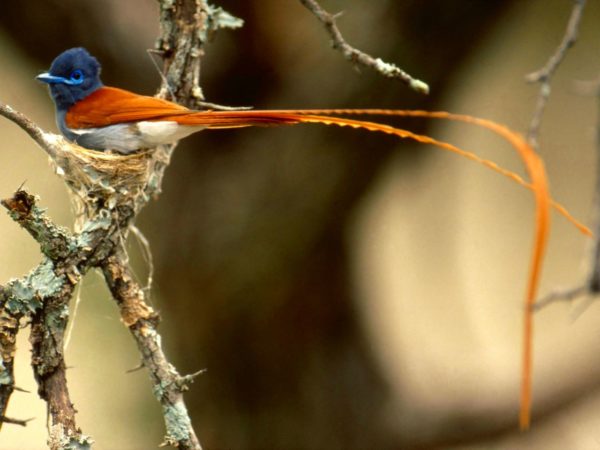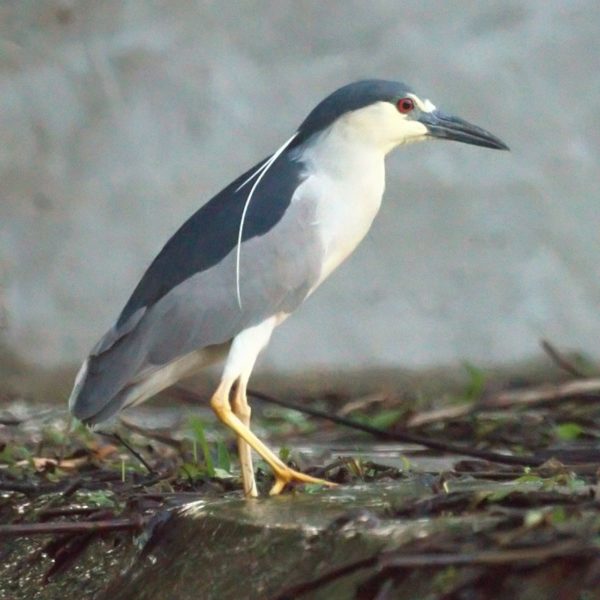The high spot was finding a new bird for the Cavern list. Not so easy with such a well-watched place thronged for some years now by keen birders. The “first” was a Black-crowned Night Heron perched right out in the open in the gums overlooking the lower pond. It’s actually one of the most widespread species in the whole world, but almost unknown in the Drakensberg foothills. Even where common it’s rarely seen because…it comes out at night, spending the day motionless under deep cover. Pictures in field guides do not do it justice. Maybe morning light helped, but the underparts were a rich cream – almost yellow – not the usual boring old white. This heron has the most magnificent head plumes – two snow-white streamers reaching almost to the tail.

Then, not twenty metres away, was the nest of a Paradise Flycatcher. This is a tropical migrant that come to our summer to breed. Often the nest – a neat, tiny cup – is placed in a delicate fork of branches hanging over a stream. This minimises the chance of predators reaching the nest, even though it may be visible. “Our” nest was set back from the water’s edge in thick undergrowth. We only noticed it because the male was incubating. Like all males it had large, luminous pale blue eye-rings, and these gleamed like beacons through a narrow window of foliage. Females have a small, dull eye-ring, and this difference is the only absolute way of distinguishing the sexes. Popular belief is that male tails are long, females not, but it’s not absolute. There are quite a few observations of “two males” raising a brood, and of “two females” doing so.

